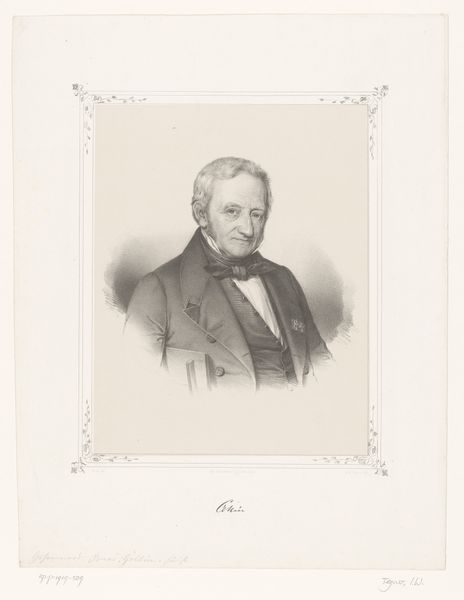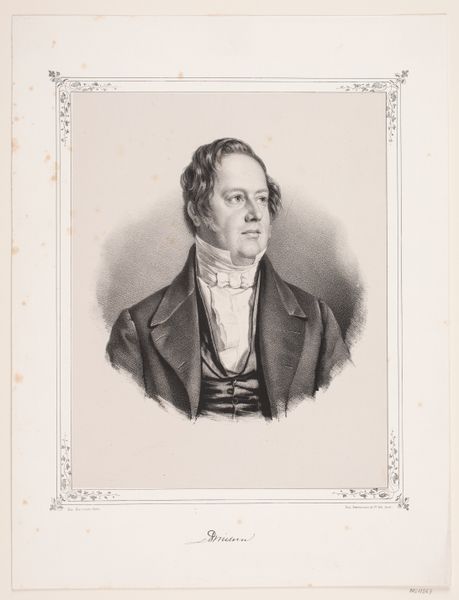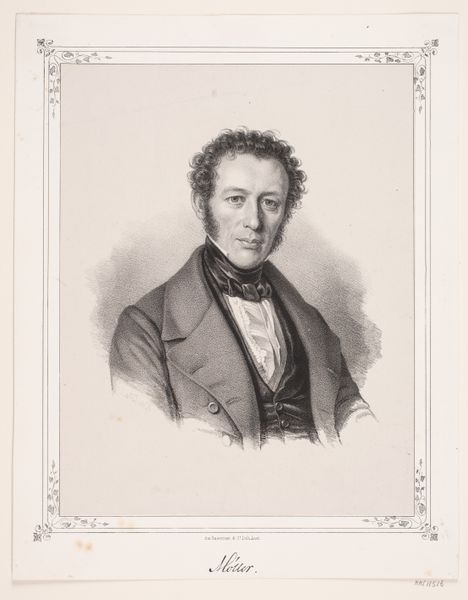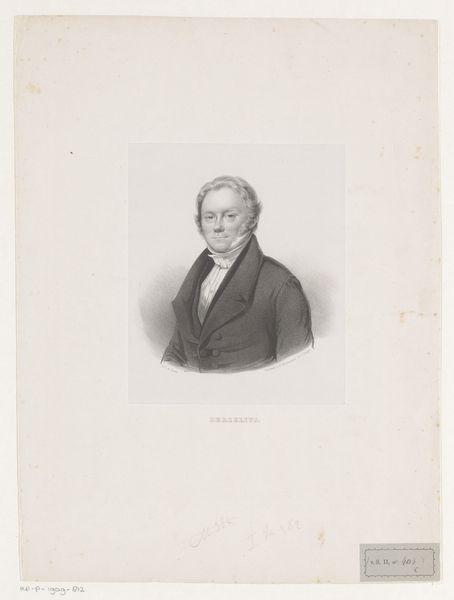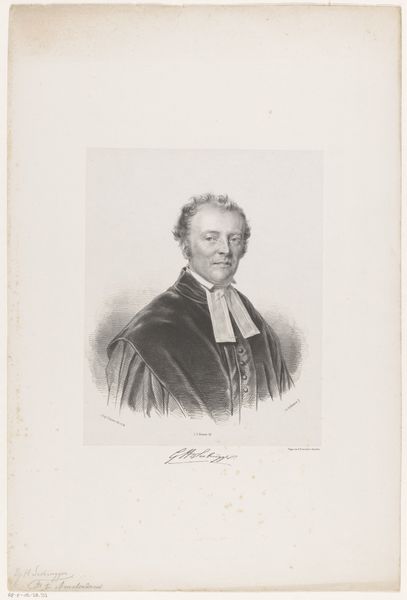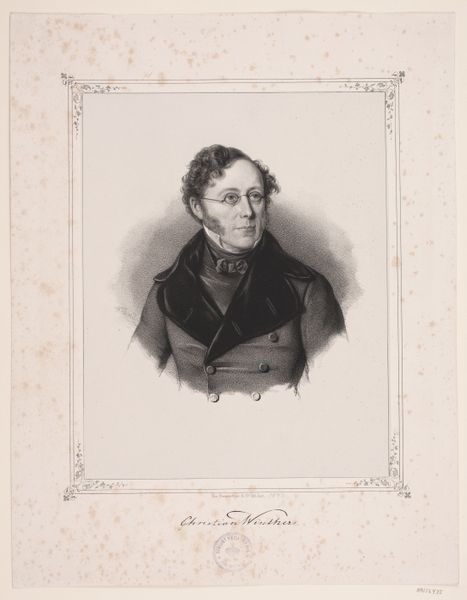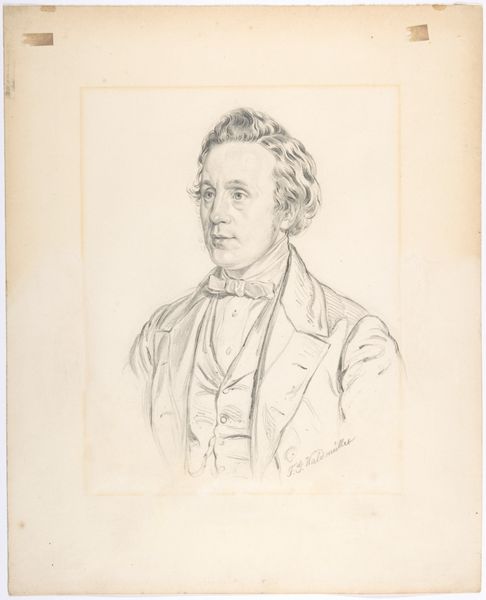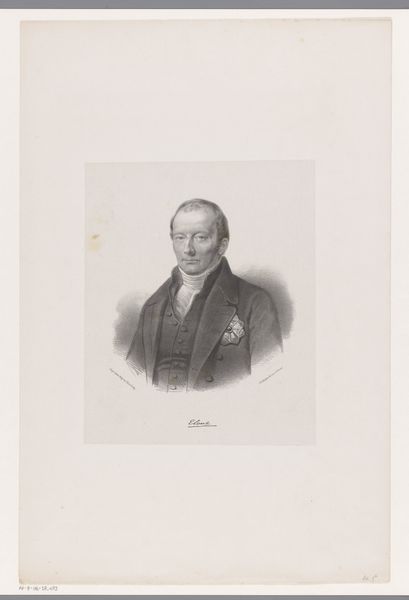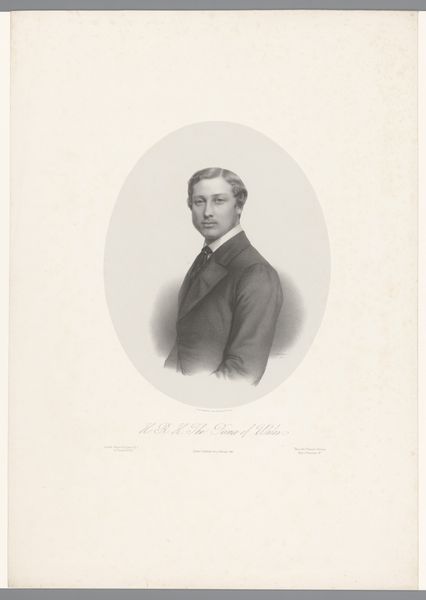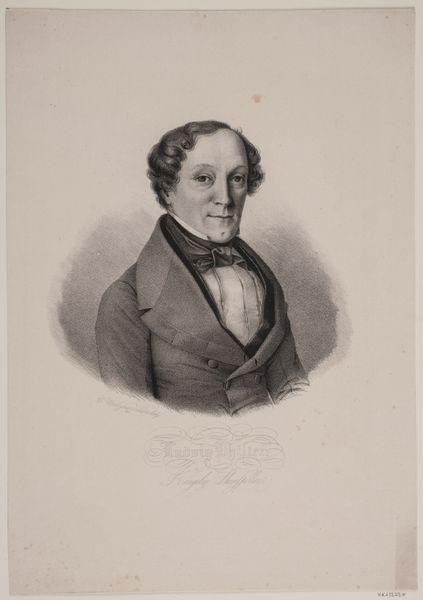
drawing, pencil
#
portrait
#
drawing
#
pencil drawing
#
romanticism
#
pencil
#
portrait drawing
#
academic-art
Dimensions: height 361 mm, width 274 mm
Copyright: Rijks Museum: Open Domain
Curator: This is Nicolas Maurin’s portrait of Charles-Prosper Ollivier d'Angers, dating from between 1825 and 1842. It's a striking example of Romantic-era portraiture rendered in pencil. Editor: My first impression is one of restrained dignity. The sitter has a very composed expression, almost melancholic. The soft gradations of the pencil create an ethereal, almost photographic effect, though, of course, photography was still in its early stages then. Curator: Exactly. Maurin was working in a period heavily influenced by academic tradition, and also the burgeoning Romantic movement. It’s fascinating how this drawing balances both. Ollivier d'Angers was a prominent physician. His serious expression conveys the weight of his profession, reflecting the Romantic era's fascination with emotional depth. Editor: Looking closer, the skill in rendering different textures is quite impressive. From the sheen on the jacket lapels to the delicate fabric of the waistcoat. And, the paper itself; it has these tiny specks adding depth beyond just the image. Curator: The use of pencil, as a medium, provides immediacy. Maurin has masterfully utilized this immediacy to communicate social status. The precision in details conveys authority while the softness hints at the man's internal sensitivities. This tension speaks volumes about the sitter's role within society and also its values. Editor: Thinking about the social aspect, the production process itself becomes interesting. Who was involved in the pencil manufacture? Was this mass-produced already, or more specialized? And the paper, its quality suggests a particular class able to afford it. This drawing whispers stories beyond the subject. Curator: Precisely. By understanding those production channels, we grasp better who had access to art-making and portraiture at that time, as well as whose images had power and longevity. Editor: Considering the era, this portrait gives insight into artistic innovation in portraiture but it also represents something of industrial and social conditions then present. An artwork that invites looking beyond appearances. Curator: Yes, it serves as a beautiful intersection of personal portrayal and broader social implications that we can explore more thoroughly. Thank you.
Comments
No comments
Be the first to comment and join the conversation on the ultimate creative platform.

